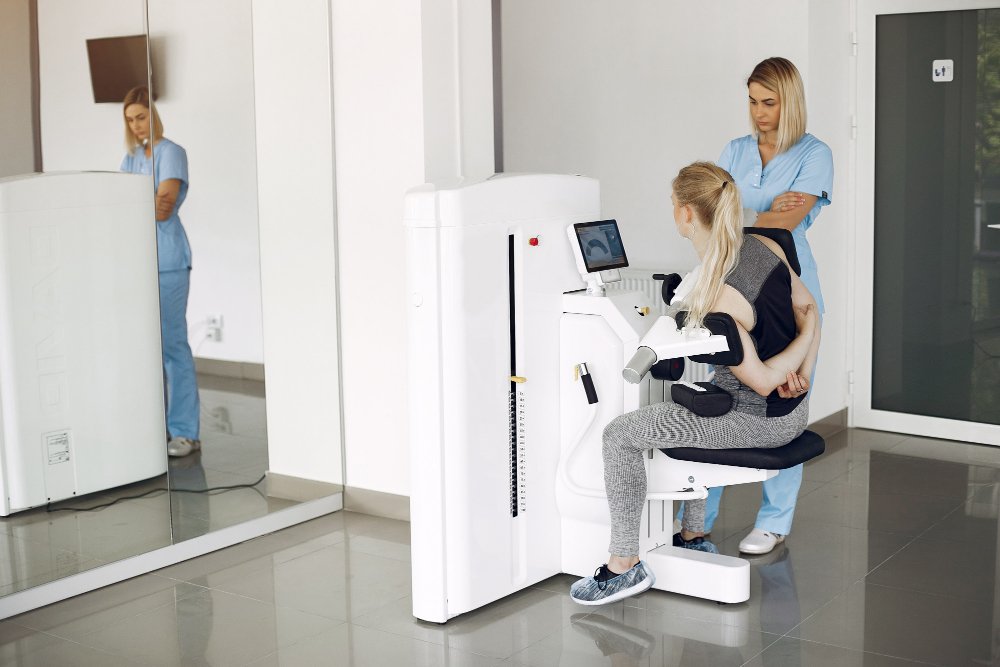
Hyperbaric oxygen can be used to overcome hypoxia. Hyperbaric therapy is based on administration of 100 % oxygen at higher than normal atmospheric pressure. Hyperbaric treatment enhances the amount of dissolved oxygen in the plasma, thereby increasing oxygen tissue delivery independent of red blood cells.
Today, angiogenesis (formation of new blood vessels) is proposed to be a key factor for cancer growth and metastasis. Thus, large experimental studies and clinical trials have investigated the effect of antiangiogenic therapies in the treatment of cancers. Since hyperbaric therapy in general has been shown to promote cellular and vascular proliferation in normal tissue and wounds it was assumed that it would also induce angiogenesis in cancers. In contrary to what was expected and addressed in the literature, hyperbaric therapy has been shown to either induce an antiangiogenic effect or had no changes in angiogenesis for cancerous cells.
Hypoxia has been described as an important factor for chemotherapeutic resistance. Studies on hyperbaric therapy as a chemotherapeutic adjuvant have shown augmented effects both in vitro and in vivo. In some tumor models, it was found that the uptake of chemotherapy is increased for the duration of, and immediately after, hyperbaric treatment. Some studies demonstrated that hyperbaric therapy prolongs the biological residence time of some chemotherapy agents like carboplatin. It is, however, important to underline that there are five chemotherapeutic agents (doxorubicin, bleomycin, disulfiram, cisplatin, and mafenide acetate); all of which are strongly contradicted in combination with hyperbaric therapy due to potential toxicity.
Radiotherapy in combination with hyperbaric treatment has been used clinically in two different applications: (1) as a therapeutic agent for treating late radiation injury and (2) as a radiosensitizer, aiming to increase the effect of radiotherapy. Treating late radiation injury with HBOT was approved by FDA and currently is covered by medical insurances.
In 1950s it was demonstrated that the oxygen concentration influences the effect of radiotherapy. In most recent studies, there is some evidence that hyperbaric therapy improves local tumor control and mortality in some types of tumors. More research needs to be done in that area. It has also been shown that adverse side effects like oxygen poisoning and severe tissue radiation injury can be associated with the use of hyperbaric therapy in combination with radiotherapy. To avoid hazardous side effects, irradiation should be administered immediately after and not concurrently to hyperbaric treatment.

Breast cancer is the most frequently occurring cancer in women and comprises 22.8 % of cancer incidence in females worldwide. Studies showed that HBO treatment alone had a strong antiproliferative effect on different mammary cancer cells in vitro. They suggested that HBO could be an effective therapy for breast cancer.
Cancer of the prostate gland is the second most frequent type of cancer in men worldwide, accounting for 13.6% of all cases. Treatment of prostate cancer depends on the grade of the disease. As most prostate cancers are slow growing, some cancers are not treated at all. However, aggressive cancers are normally treated using surgery, in addition to chemotherapy, hormonal therapy, immunotherapy, and/or radiation. Some studies showed that HBO can decrease the rate of growth and increase the sensitivity to the anticancer agents taxol and doxorubicin in in vitro experiments, by accumulating prostate cancer cells in the chemosensitive portion of the cell cycle.
Colorectal cancer is a disease originating from the epithelial cells lining the colon or rectum of the gastrointestinal tract. Most colorectal cancers occur due to lifestyle and increasing age. Even though surgery can be curative if the disease is caught early, additional treatment of advanced colorectal cancer is commonly in use. Some studies demonstrated that HBO as a stand-alone treatment seems to have no effect on colorectal cancer, but as a treatment adjuvant, HBO seems to be an interesting alternative as it demonstrated reduction both in liver metastases and tumor growth, in addition to inducing increased levels of necrosis.
Gliomas are tumors originating in the glial cells in the brain or the spine. Patients with high-grade gliomas generally have poor prognosis, and the illness is rarely curable. Some studies recently demonstrated that increased levels of pO2, using both normobaric and moderate HBO, significantly reduced tumor growth, possibly by increasing cell death and reducing the vascular density. This might indicate that HBO alone has a favorable effect on gliomas. In a study of HBO and chemotherapy, it was suggested that HBO therapy prolongs the biological residence time of carboplatin. Some evidence implies that HBO as an adjuvant to traditional therapy in gliomas should be investigated further, and this could lead to an improvement of current therapy regimens.
Leukemia is cancer of the blood or bone marrow characterized by an abnormal increase of immature white blood cells. Two recent in vitro experiments have shown promising results when treating leukemia cells with HBO. They concluded that since HBO promotes apoptosis in leukemia cells, it should be further exploited as a novel treatment for leukemia. It is, however, important to emphasize that this is based on experiments performed in cell culture, and thus needs further validation from in vivo models.
2025 Lakeshore Hyperbaric Center | All Rights Reserved